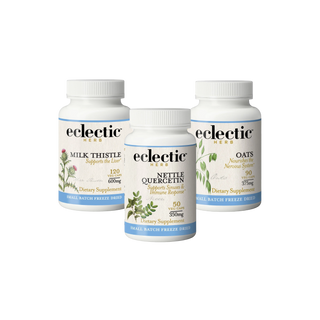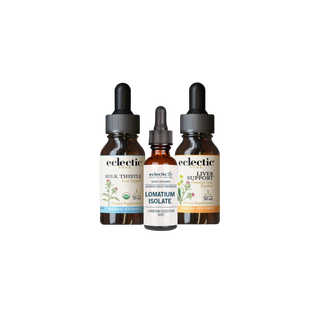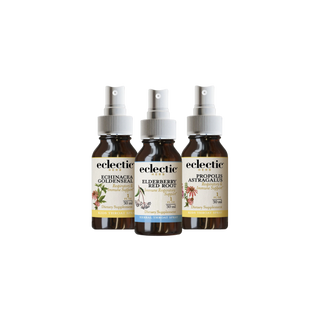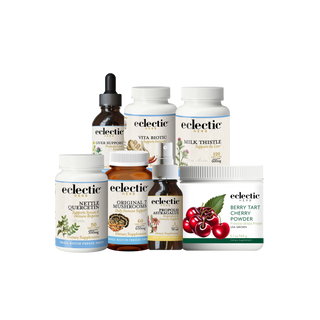
Introduction
The Columbia River Gorge, with its stunning vistas and diverse ecological landscape, is a haven for hikers and nature lovers, and also a treasure trove of edible and healing wildflowers. Among the breathtaking waterfalls and expansive views, a variety of unique plants thrive, offering both nourishment and healing properties. Let's explore some of these natural wonders, including Lomatium grayii, balsam root, starflower, and more, that call this beautiful region home.
💡 Did you know
Many of the edible and medicinal plants in the Columbia River Gorge have been used for thousands of years, linking current foragers with a long tradition of indigenous plant knowledge and use.
Identifying and Ethically Harvesting
Step 1: Accurate Identification
- Use Reliable Resources : Arm yourself with a good field guide specific to the Pacific Northwest or use reputable online resources and apps to help with plant identification.
- Observe Distinctive Features : Pay attention to leaf shape, flower color, and growth patterns. Many plants in the gorge, like Lomatium grayii and balsam root, have distinctive characteristics that set them apart.
- Take a Workshop : Consider attending a local foraging workshop. Learning from experienced foragers can enhance your identification skills and local plant knowledge.

😍 The practice of ethical foraging includes harvesting in a way that allows the plant population to regenerate, ensuring that these natural resources remain abundant for future generations.
Step 2: Ethical Harvesting: Principles to Forage By
- Harvest With Permission : Always ensure you’re foraging in areas where it’s legal to do so, and obtain permission if foraging on private lands.
- Take Only What You Need : It’s easy to get carried away, but remember, these plants are part of a larger ecosystem. Harvest sparingly, so the plant population can regenerate.
- Be Mindful of Endangered Species : Some plants may be at risk or protected. If you're unsure, err on the side of caution and leave the plant alone.
- Leave No Trace : Avoid trampling surrounding vegetation and habitats. Stick to trails and disturbed areas where possible.
- Practice Sustainable Techniques : When harvesting roots, for example, take only a small portion and replant the remainder. For leafy plants, snip off parts rather than uprooting the whole plant.
Step 3: Preserving Harvested Plants
Drying: The Classic Preservation Method
- Air Drying: Tie harvested plants into small bundles and hang them upside down in a dry, well-ventilated area away from direct sunlight. This method works well for herbs with sturdy stems.
- Screen Drying: Lay delicate flowers and leaves flat on a mesh screen in a dry, shaded place. This method ensures even air circulation without crushing the plant parts.
Freezing: Capturing Freshness
- Whole Freezing: Place whole or gently chopped herbs into freezer bags. Removing as much air as possible will prevent freezer burn and preserve flavors.
- Ice Cube Trays: For herbs you’d like to use in cooking, consider chopping them finely, placing them in ice cube trays, covering with water, broth, or oil, and freezing. Pop out an herb cube whenever you need a burst of flavor in your dishes.
Making Tinctures and Oils: Long-term Preservation
- Tinctures: Soak the plant parts in alcohol or vinegar for several weeks, shaking the container periodically. Strain the liquid, and you have a tincture that can last for years.
- Infused Oils: Gently heat plant parts in a carrier oil (like olive or almond oil) over low heat for a few hours or let sit in a sunny spot for a few weeks. Strain the oil and use it for culinary, medicinal, or topical applications.
Creating Salves and Balms: For Topical Use
- Salves: After infusing your plant in oil, mix the strained oil with beeswax until melted together. Pour into containers and let set. These are excellent for skin conditions or as natural moisturizers.
- Balms: Similar to salves, balms can include shea butter or cocoa butter for a thicker consistency. Add essential oils for fragrance and additional benefits.

By following these guidelines for identification, ethical harvesting, and preserving, foragers can enjoy the bounty of plants in a way that respects the environment and ensures they continue to thrive for generations to come.
Remember, each plant you encounter has a role in the ecosystem and potentially holds stories and traditions dating back centuries. Treating them with respect not only preserves biodiversity but also deepens our connection to the land and its history.
💡 Did you know? The Columbia River Gorge is home to over 800 species of wildflowers, making it one of the most diverse floral regions in the Pacific Northwest.
Lomatium (Lomatium dissectum)
The striking purple flowers of Lomatium dissectum, also known as desert parsley, can be found in the Columbia River Gorge in Springtime. This plant is visually stunning, and also offers a variety of health benefits. The roots, known for their potent immune properties, have been traditionally used to support respiratory health and boost the immune system. Lomatium dissectum was used extensively by the Native Americans and is especially valued for its ability to help support the lungs and immunity during winter.

Biscuit root (Lomatium grayii)
This plant is commonly known as Gray's biscuitroot and is native to the rocky soils of the Columbia River Gorge. Traditionally used by indigenous peoples for its immune and healing properties, Gray's biscuitroot can be a potent ally during the winter season. Its roots are the most commonly utilized part, often made into a decoction or tincture. Beyond its medicinal uses, the seeds of Lomatium grayii are edible and have been ground into flour by Native Americans for centuries.

Indian Paintbrush (Castilleja spp.)
A beautiful wildflower that is traditionally used in Native American healing traditions. It has been employed for its anti-inflammatory properties and as a remedy for supporting joints and skin. Some tribes used the flowers as a hair wash to promote shine and growth. Caution is advised when using Indian Paintbrush, as it can absorb selenium from the soil, making it potentially toxic if consumed in large quantities. Always consult a knowledgeable healthcare provider before using wild plants for medicinal purposes.

Balsam Root (Balsamorhiza sagittata)
The bright yellow flowers of the balsam root are a herald of spring in the Columbia River Gorge. This sunflower relative is not only beautiful but also offers a variety of edible and medicinal parts. The roots, rich in inulin, can be roasted or boiled, providing a nutritious food source. Medicinally, balsam root has been used to treat wounds and infections due to its antibacterial properties. The leaves and seeds are also edible, with the young leaves making a flavorful addition to salads.

Starflower (Trientalis borealis)
The delicate starflower, with its pink, star-shaped blooms, is a hidden gem of the forest floor in the Columbia River Gorge. While not as well-known for its edible or medicinal properties as other plants in this region, starflower has been used by indigenous cultures for its mild sedative and analgesic properties. The young leaves are edible and can be added to a wild foraged salad, offering a slight bitterness that complements sweeter greens.

Camas (Camassia quamash)
The lovely Camas plant, with its vibrant blue-violet flowers, lights up the meadows of the Columbia River Gorge each spring, creating a breathtaking display. Beyond its visual appeal, Camas holds a place of great cultural and nutritional significance. Historically, it served as a staple food source for indigenous peoples of the region, who carefully harvested its bulbous roots. These bulbs, when cooked, transform into a sweet, nutritious treat, reminiscent of roasted chestnuts. The process of cooking Camas is essential, as it converts inulin into fructose, making it digestible and revealing its natural sweetness. While Camas is celebrated for its edible qualities, it's equally important to harvest it with knowledge and respect, distinguishing it from potentially toxic look-alikes, to safely enjoy its bounty.

Oregon Grape (Mahonia aquifolium)
Oregon Grape, with its holly-like leaves and clusters of yellow flowers followed by deep blue berries, is an emblematic shrub of the Pacific Northwest, including the Columbia River Gorge. More than just a beautiful plant, Oregon Grape possesses potent healing properties, thanks to the alkaloid berberine found in its roots and bark. This compound lends Oregon Grape its bitter taste, which stimulates liver function and digestion, and offers antimicrobial benefits, making it a valuable plant in a healing toolkit. The berries, though tart, can be made into jellies, syrups, and wines, providing a vitamin C boost. When foraging Oregon Grape, it’s important to do so sustainably, ensuring that this versatile and therapeutic shrub continues to thrive in its native habitat.

As we draw this exploration of the Columbia River Gorge's wildflowers to a close, it's clear that the richness of this region extends far beyond what we've covered. The gorge is home to countless other botanical wonders, each with their own stories and uses. For instance, the delicate Clarkia purpurea, with its stunning purple petals, not only beautifies the landscape but has been used in traditional remedies for its soothing properties. The fiery Oregon Paintbrush, or Castilleja, adds splashes of red and orange to the green canvas and is revered for its antiseptic qualities. And let's not forget the humble Yarrow, whose white blossoms have been a staple in herbal medicine for their ability to heal wounds and reduce fever. This journey through the gorge's floral abundance showcases the interconnectedness of life and the invaluable wisdom nature offers.
By fostering an understanding and respect for these plants, we ensure that the stories, traditions, and ecosystems of the Columbia River Gorge continue to thrive, enriching the tapestry of our natural world for generations to come. Let us carry forward the legacy of stewardship and curiosity, ever mindful of the beauty and healing that surrounds us.












